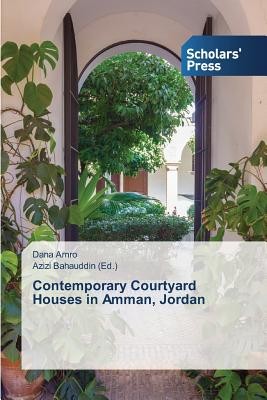
- We will send in 10–14 business days.
- Author: Amro Dana
- Publisher: Scholars' Press
- Year: 2015
- ISBN-10: 3639768728
- ISBN-13: 9783639768725
- Format: 15.2 x 22.9 x 2.8 cm, softcover
- Language: English
- SAVE -10% with code: EXTRA
Reviews
Description
Traditionally, the Islamic Arab world has adopted the courtyard house design because it can satisfy the privacy and social activity requirements of its residents. Likewise, it provides many logical architectural solutions to the local environmental problems. These solutions include the integration of a courtyard into the design, traditional cultural elements (Malqaf "wind catcher", Mashrabiyyah "wooden screen", Bahra "fountain", and Salsabil "marble water fall"). However, in Jordan, the western-influenced houses have created cultural and environmental problems, which affect the residential quality of life. This study aims to evaluate the reviving of the traditional elements in contemporary houses and its effects on the residents' quality of life. The study also aims to examine related problems by investigating the influence of contemporary courtyard houses on the residents' quality of life.
EXTRA 10 % discount with code: EXTRA
The promotion ends in 18d.10:18:12
The discount code is valid when purchasing from 10 €. Discounts do not stack.
- Author: Amro Dana
- Publisher: Scholars' Press
- Year: 2015
- ISBN-10: 3639768728
- ISBN-13: 9783639768725
- Format: 15.2 x 22.9 x 2.8 cm, softcover
- Language: English English
Traditionally, the Islamic Arab world has adopted the courtyard house design because it can satisfy the privacy and social activity requirements of its residents. Likewise, it provides many logical architectural solutions to the local environmental problems. These solutions include the integration of a courtyard into the design, traditional cultural elements (Malqaf "wind catcher", Mashrabiyyah "wooden screen", Bahra "fountain", and Salsabil "marble water fall"). However, in Jordan, the western-influenced houses have created cultural and environmental problems, which affect the residential quality of life. This study aims to evaluate the reviving of the traditional elements in contemporary houses and its effects on the residents' quality of life. The study also aims to examine related problems by investigating the influence of contemporary courtyard houses on the residents' quality of life.


Reviews